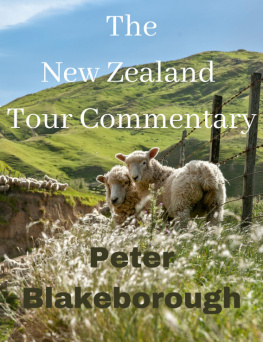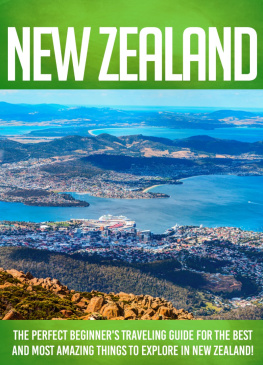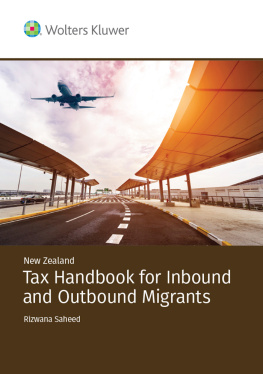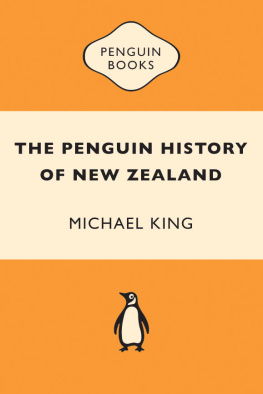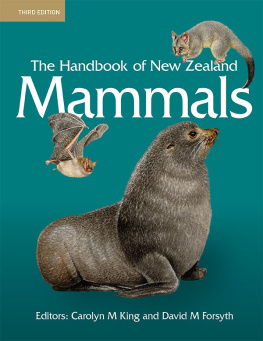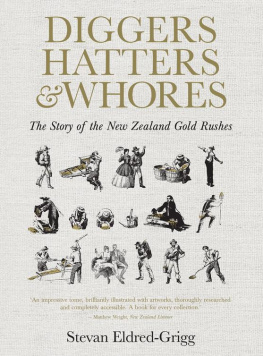The New Zealand Tour Commentary
Peter Blakeborough
Since it was firstpublished in 2009, The New Zealand Tour Commentary has become thestandard reference manual for New Zealand tour guides.
Copyright 2022 PeterBlakeborough.
Smashwords Edition.
This eBook is licensedfor your personal use only. This eBook may not be re-sold or givenaway to other people. If you would like to share this book withanother person, please purchase an additional copy for eachrecipient. If youre reading this book and did not purchase it, orit was not purchased for your use only, then please return to yourfavourite eBook retailer and purchase your own copy. Thank you forrespecting the hard work of this author.
The New Zealand Tour Commentary handbook hadits beginnings in 2008 when I was commissioned to write a tourcommentary for a North Island coach operator.
The task was completedwithin a few weeks, drawing on many years of tour drivingexperience, delivering commentaries, and some research. It was asmall beginning and covered only part of the North Island.
In 2009 the commentarywas updated, expanded, and made available to other drivers andguides. Copies were printed, bound at home, and sold asopportunities arose on tour. The book was updated again in 2010,2012, 2015, and 2016. Each edition sold out quickly, and sometimesbuyers had to wait for reprints to become available. The arrival ofthe COVID-19 pandemic had a major impact on tourism and the needfor this book.
However, The New ZealandTour Commentary is back. The new 2022 edition represents a giantleap forward for the manual with a substantial revision and theaddition of several new sections. All towns and communities alongthe main tourist routes are now covered with enough information,history, and data for tour guides to build their own personalised,exciting commentary.
I hope that tour drivers,tour directors, guides, and tour and coach operators, find the NewZealand Tour Commentary a practical manual and an entertainingread.
Peter Blakeborough
Ngatea, New Zealand.
September 2022
80,000,000 BC The land mass that wouldbecome New Zealand started to separate from Gondwanaland.
65,000,000 BC NewZealand dinosaurs became extinct as the climate underwent rapidcooling.
60,000,000 BC The NewZealand tuatara is the sole survivor of a family that has becomeextinct.
5,000,000 BC Homoerectus evolves in Africa.
3,000,000 BC TheNew Zealand climate cools as Australia drifts north. Animals thathad evolved in warmer temperatures became extinct.
1,800,000 BC Homoerectus reached Asia and Indonesia and became Java Man.
38,000 BC Homosapiens evolved in Africa and the Middle East and started replacingNeanderthals as the dominant species.
30,000 BC A warmerclimate allowed man to settle in Siberia and start using stonetools.
28,000 BC NewGuinea was settled from Asia and Australia.
24,000 BC A majoreruption occurred at Taupo covering large parts of the country withvolcanic material and changing the course of the Waikato River.
18,000 BC The sealevel was at its lowest level in more than 100,000 years (130meters/426 feet below its current level). Ice sheets coveredextensive parts of the earths surface. Many New Zealand glaciersextended to the sea, and a land bridge connected the North andSouth islands.
16,000 BC TheMelanesian and Micronesian islands were settled from the west bycrossing land bridges and island hopping. The Melanesian andMicronesian people were the probable ancestors of the Polynesianpeople, who would evolve later and become one of the worlds firstmajor sea-going voyagers.
12,000 BC Peoplereached North and South America before the Bering Strait landbridge was flooded.
11,000 BC Asignificant warming period began.
10,000 BC Anintense cold period began. Glaciers re-formed in Britain. Aboutthis time, dogs and goats were domesticated for the first time. Theland bridge connecting New Zealands main islands was flooded.
9,000 BC Anotherperiod of rapid warming and cooling takes place.
8,300 BC The UpperDryas (Ice Age) ended with significant ecological changes andrapidly rising sea levels. Many land bridges and low-lying islandsdisappear.
4,000 BC Thewheel, pottery, and bricks were invented in the Middle East.
2,000 BC TheLapita culture developed in the Solomon Islands and spread toVanuatu, New Caledonia, and Fiji.
1,200 BC ThePolynesian races evolved in Fiji, Tonga, and Samoa and movedprogressively eastward in a series of migrations.
700 BC Theevolving Polynesian people reached the Marquesas Islands, EasterIsland, and possibly the South American west coast. Meanwhile,people from South America travelled into the Pacific, bringing theSouth American sweet potato (kumara) with them.
500 BC From theirMarquesas Islands base, Polynesians became serious ocean-goingtravellers, branched out, and settled in the Hawaiian Islands,Society Islands, Cook Islands, and numerous lesser island groups.The reason for these long ocean voyages is obscure but could havebeen because of overcrowding, war, famine, or curiosity. Mostjourneys were one way, and the crews were well prepared.
1 AD The kiore, orPolynesian rat, became established in New Zealand, according torecent carbon dating of bones. This may also indicate the presenceof people at this time.
An eruption ofTaupo resulted in 120 cu km of volcanic material being ejected,causing darker skies and lower temperatures around the world, againchanging the course of the Waikato River.
From a newbase in the Cook Islands, Polynesians settled the Tuamotu group tothe east and the Austral Islands to the south.
This was theearliest believed arrival time of the legendary, perhaps mythical,Kupe. As the discoverer of New Zealand. It is said that when hecame in sight of land (Great Barrier Island), his wife cried aotea,and later they discovered the mainland covered in cloud, tearoa,and from that came Aotearoa, or the land of the long whitecloud.
According to legend,Kupe., accompanied by varying numbers of wives, slaves, andfollowers, travelled extensively, living in numerous places andleaving varying numbers of descendants before returning to Hawaiki.The Kupe legend varies from tribe to tribe, the only consistencybeing the name Kupe. The truth behind the legend of Kupe, nowdimmed by the mists of time, may never be known. The absence of awritten Maori language combined with unreliable early European-bornhistorians has cast a shadow over New Zealands earliest history.However, recent research indicated that the late 13th century mightbe the time of the first Polynesian settlers in New Zealand.
1280 The migrationof Polynesians through the Pacific was possibly one of the mosthazardous sea voyages undertaken anywhere in the world up to thattime. A voyage to New Zealand started in either the Cook Islands orthe Marquesas group would have sailed southwest into the vast andempty South Pacific. It is unknown how many canoes sailed for thenew land or if all arrived safely. New Zealand, even if they knewof its existence, would be a tiny target to aim for, even though itwas the most significant South Pacific land mass after New Guineaand Australia, and, at best, the journey would have constituted agame of Russian roulette with the sea and a hostile southernclimate. An average course variation of 10 degrees from the CookIslands would have been enough for them to miss the new land.
1400-1500 This wasa period of land cultivation and the evolution of a distinctive NewZealand Maori culture. Some Maori migrated to the Chatham Islandsand evolved into Maoriori.
1500 A series ofvolcanic eruptions formed Rangitoto Island near Auckland. Moabecame extinct due to hunting, fires, and their natural predator,the Haasts eagle.
Next page
